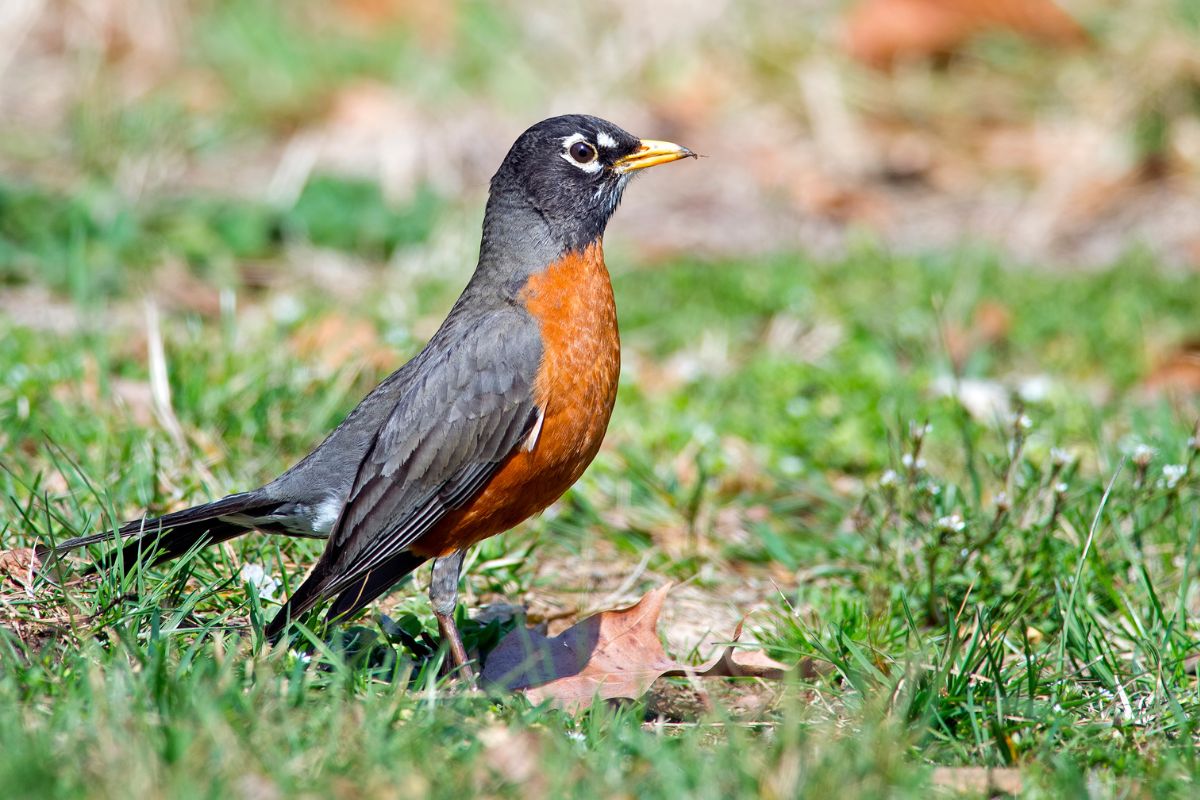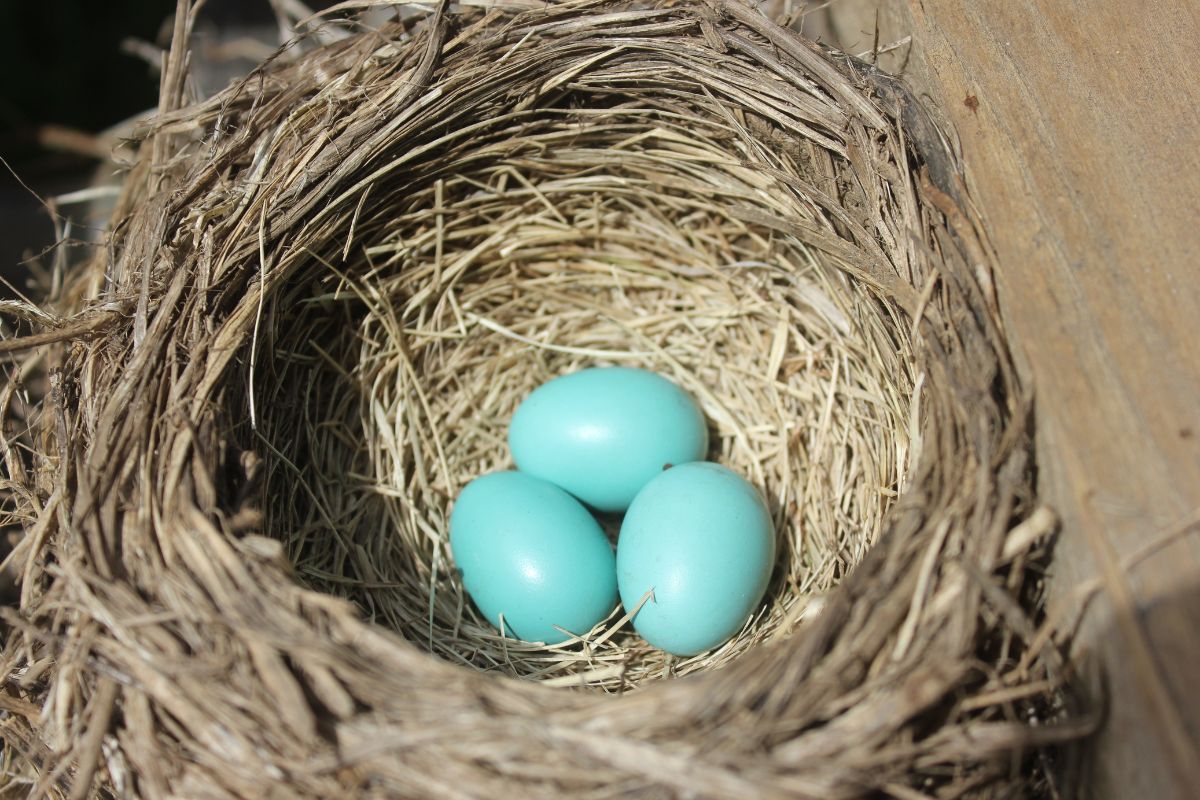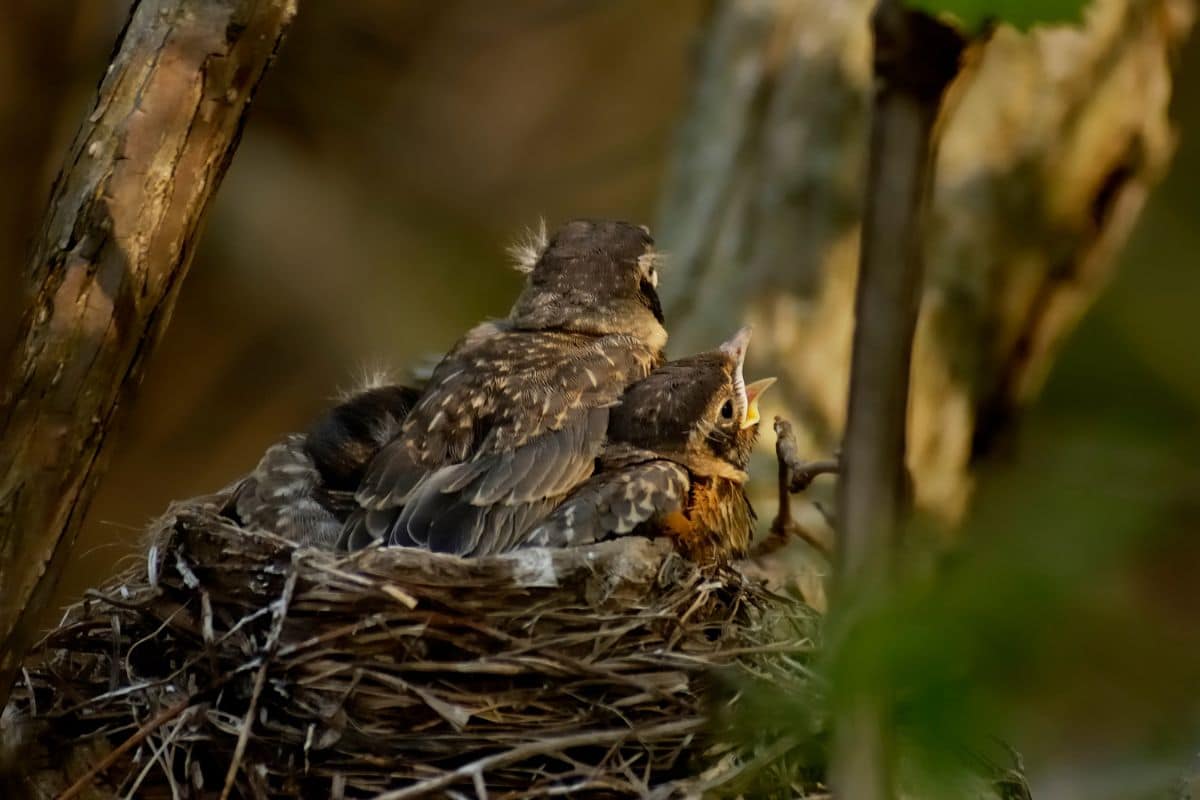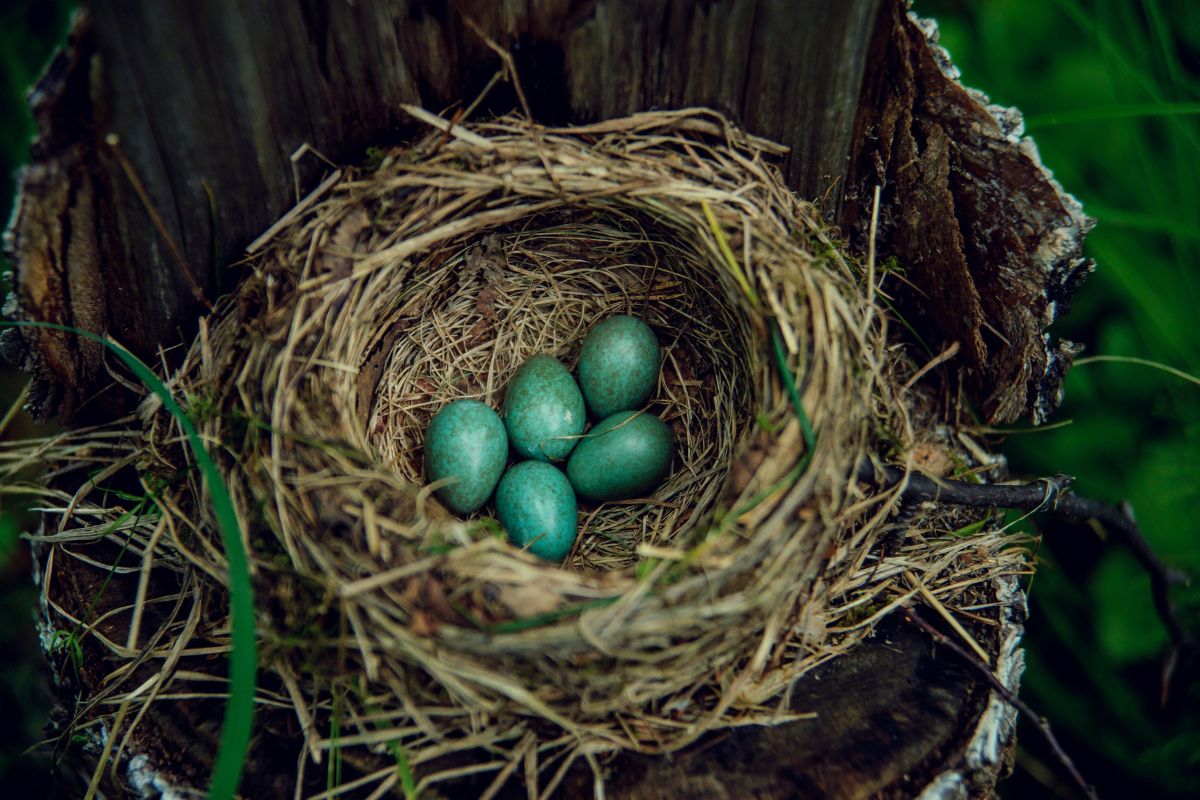The American robin is a reasonably common bird in North America. You’ll often see these playful birds hopping around trees in your backyard or on city sidewalks, as they are somewhat accustomed to people.

Whether you’re interested in learning more about robins and their nesting patterns or you want to know whether it’s alright to remove the nest you found on your roof, we have all the information you need here.
Contents
Do Robins Reuse Their Nests?
No, robins do not typically reuse their nests. If a robin finds a spot they like, it may return the following year to the same place, but it will still build a new nest.
Robins who return to the same spots year after year frequently take apart their old, used nests and use the bits and pieces in their new nest. If a robin has found some satisfying materials, like unsoiled cotton, clothing, and paper, it will quickly move the soft and warm pieces into its new nest.
People consider robins as an icon of spring. And just like the season, these birds prefer to keep things new and fresh, so they’ll always go for a new nest over an old one for their next breeding season.
Robins generally use one nest per brood, which is the young chicks hatched and cared for by a female robin at one time. Robins have at least two broods per year and raise a maximum of four broods in one breeding season. The robins use a new nest for each brood throughout the year, though they often return to the same spot in one breeding season.
What Is A Robins’ Nest Made Of?

A robin’s nest is made of mud, twigs, leaves, grass, and any soft materials the female robin can find. The mud and twigs create the round, structured foundation of the nest, and the other materials like leaves, grass, loose paper, clothing materials, and cotton are placed on the inside to create a soft and warm lining.
Male robins help gather the materials, but the female robins are entirely responsible for putting together the nest. The nests are round and typically measure about four to six inches across.
When Do Robins Make Their Nests?
Robins lay their eggs earlier than most birds, usually two to four eggs in early April. The female robin constructs the nest starting in late January to early March. The robin breeding season begins in March, so the nest must be finished before breeding.
It takes the female robin about one month to finish constructing the nest.
Where Do Robins Make Their Nests?
Robins, like most birds, prefer to keep their nests in safe, well-hidden locations. Small birds like robins have many predators, including larger birds like jays and crows and larger mammals like cats, dogs, and foxes. In addition, snakes are a significant predator danger to robins, as they seek out the bird’s eggs during breeding.
Because of all the danger surrounding them, robins usually make their nests in tall trees and other spots away from prying eyes (including commercial and residential roofs).
Can I Remove A Robins’ Nest?

If you’ve found a robin’s nest on your roof, in your bushes, or in any other slightly inconvenient place, you may wonder if it’s safe to remove it. Well, this depends on a few factors, primarily the presence of eggs, whether the nest is complete, and the time of year you find it.
First and foremost, if there are eggs in the nest, absolutely do not move the nest. You will place the birds at risk, and it is illegal to remove an active bird’s nest in most states.
If the nest only has the basic foundation, the robin has likely just started to construct it. You should not remove it in this case because you may set back the robin’s progress and put their breeding season timeline off track.
Lastly, the time of year matters because once the breeding season concludes, you’re safe to remove any leftover nests. The robin breeding season lasts from the beginning of March to July. If the weather is warm enough, many robins begin building their nests in late January through early February. If you find a nest outside of the breeding season (August through December), it’s safe to assume that the nest can be safely removed without worry.
Frequently Asked Questions
Here are some frequently asked questions regarding robins’ nests.
How many eggs does a robin lay during the breeding season?
Robins lay between three and five eggs per brood. However, robins raise between two to four broods in one breeding season (typically, either two or three, four broods is an exceptional breeding season). So if a robin has a typical three-brood breeding season, they likely lay between nine and fifteen eggs each year.
What happens if you disturb a robin’s nest?
Disturbing a robin’s nest often causes the mother robin to abandon the nest. Experts recommend not moving a bird’s nest, especially if there are eggs in the nest. Moving it may cause issues with the birds, but it may also be illegal to disturb an active nest, depending on the state you live in.
Do robins come back to their nest every year?
As explained above, robins rarely use the same nest twice. However, they often return to the same spot and create a new nest. If a robin has found a spot that is reliably safe, year after year, this will often become its go-to nest spot.
In addition, using the same spot means they can use still-useful pieces from their old
Final Thoughts

Robins are one of the most beautiful, common birds you’ll often see in North America. These small birds’ nests are quite famous because the bird’s unique baby blue eggs stand out against the regular twigs and leaves of a nest.
Robins, unlike other birds, very rarely reuse a nest. These birds like to have a new nest for each brood. Since robins usually raise between two and three broods within one breeding season, this means they usually construct two or three nests each year.
